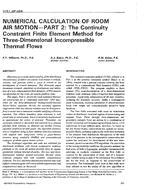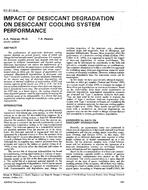This paper presents a numerical investigation of the indoor conditions in a bedroom in a wooden building located in Saskatoon, Vancouver, and Toronto, Canada. Based on correlations from the literature, which quantify the effect of temperature and humidity on warm respiratory comfort and perceived indoor air quality for sedentary adults, the results indicate that hygroscopic materials have a good potential to improve comfort and air quality in Canadian residences. However, the application of hygroscopic materials will not ensure acceptable indoor conditions and during some weather conditions (typically less than 10% of the time) hygroscopic materials may slightly degrade the indoor conditions. At a ventilation rate of 0.5 ach, it is possible to improve the indoor conditions in each climate studied such that as many as 10 people out of 100 are satisfied with the thermal comfort conditions (warm respiratory comfort) at the end of occupation. Similarly, the percent dissatisfied with perceived air quality can be 20% lower in the morning when permeable and hygroscopic structures are applied. On average, the reduction in percent dissatisfied with comfort and air quality at the end of occupation is 2% and 4%, respectively, when the outdoor ventilation rate is 0.5 ach. When the ventilation rate increases to 1 ach, the differences between the hygroscopic and nonhygroscopic cases decreases.
Citation: Thermal Performance of Exterior Envelopes of Whole Buildings IX
Product Details
- Published:
- 2004
- Number of Pages:
- 15
- File Size:
- 1 file , 9.9 MB
- Product Code(s):
- D-BldgsIX2


